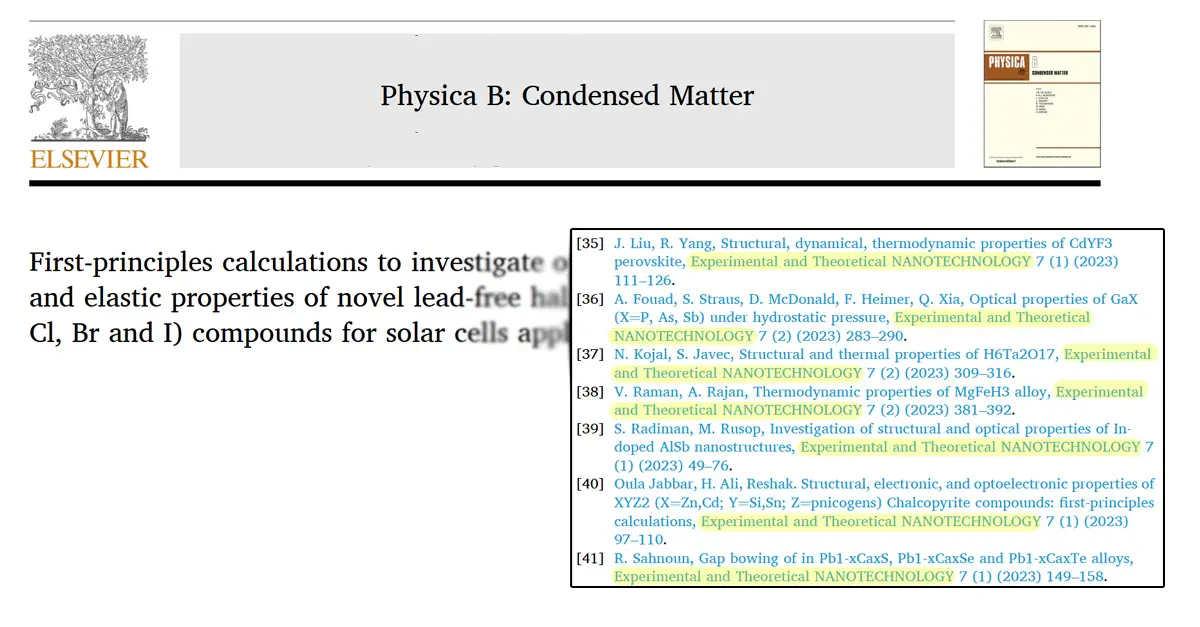Introduction
Our thoughts
When we saw this tweet we decided to post our thoughts. If you did not see them, or are not a X (Twitter) user, here they are.
Just had a look at the paper.
- It’s interesting that all of those papers ([24-57) are fully “highlighted in blue” (on the PDF) – meaning that they are a hyperlink. This is normal, so that a reader can be taken directly to the paper that is being cited.
But the other papers that are being cited (apart from a couple) only have the DOI highlighted.
This suggests (to us anyway) that the 33 papers that are being discussed were edited in a different way to the others (added later?).
See Figures 2 and 3.
- As you say, it would be interesting to see the reviews. It would also be very interesting to see the paper that was submitted and the paper that was published and when these references appeared? Were they there in the original submission, or were they added later? And, if later, at what time during the peer review process?
- The journal in question (Physica B: Condensed Matter) has a (2022) Scopus CiteScore of 5.00 and has been indexed since 1998 (and also in 1994). Would Scopus investigate this potential citation stacking?
- The journal has a (2022) Clarivate impact factor of 2.8. It has been indexed by Web Of Knowldge since 1997. Same question as to Scopus – will you investigate this potential citation stacking?
- The journal (ISSN: 0921-4526) is a member of COPE (Committee on Publication Ethics). Do they have the “teeth” to investigate a paper from one of its members, or at least ask to to see the timeline, review reports etc?
- Can any of the editors help explain what happened with this paper and is everything as it should be?
- Finally, we assume that Elsevier will be interested in this paper and will investigate – again, knowing that it all might be okay?
Thanks again for spotting this. We hope somebody investigates, even if it shows that there is nothing untoward.
Further Comments
- The paper is still available on the Physica B: Condensed Matter web site. You can see the paper via DOI 10.1016/j.physb.2023.415242.
- Yarub Al-Douri is still the Editor-in-Chief of Experimental and Theoretical Nanotechnology. You can see this here, but we have also archived it here.
- Just because it is interesting to do so, we had a look at Douri’s Google Scholar page. It makes interesting reading and might be something we look at more closely at a later date. We have also archived it here, so that we have a record of the day we originally looked at it.
- Nick Wise has commented on this paper on PubPeer but, at the time of writing, there has been no response.
Final Thoughts
Nick Wise posted about this paper on 21 Nov 2023, posting in PubPeer the same month.
We responded to Nick’s tweet on 22 Nov 2023.
As far as we can tell no action has been taken. Perhaps there is work going on in the background, perhaps they do not feel that anything is wrong or perhaps they think that it will just blow over.
It would be nice though if Elsevier, the journal editors, the authors, or even the reviewers made a comment. We won’t hold our breath though.
You may also want to take a look at this post, where we first mentioned this paper, but we wanted to follow it up with up with this post.
What do we think?
We’d love to be proved wrong but a reviewer (Al-Douri?) told the authors they had to add these citations before the paper was accepted.
As we say, happy to be proven wrong, but this is the conclusion we reach based on the limited set of facts we are presented with.





